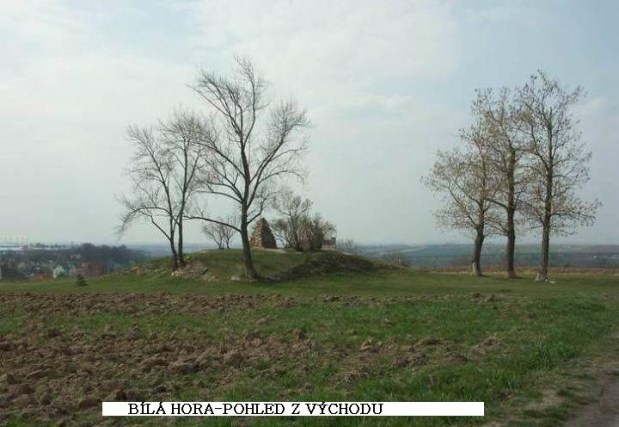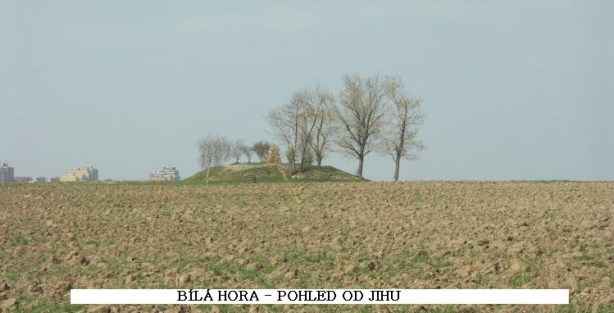Když vidím to políčko.....nějak mi cuká v ruce!!!
The Thirty Years' War Part 5.
Categories: Years of war and revolution , Třicetiletá válka
The Battle of White Mountain Episode 5.A
........ The officers mostly retired to the Praguewhere the King was to meet the English legation, in whose honour a luncheon was being prepared. When, on the morning of the 8th of November, he appeared at the Hostivice the vanguard of the enemy, the Estates troops, tired from the night march and without proper equipment, looked on in idleness.
Anhalt, Thurn and Hohenlohe had decided to form a battle formation here, following the Dutch model, because they considered this place strategically advantageous. The disadvantage was the tightness of the place, which did not allow the advantages of the Dutch doctrine (mobility) to be exercised over the cumbersomeness of the Spanish formation used by the enemy, nor the fire superiority. For want of tools, it was impossible to dig trenches around the guns and on the flanks. Two heavy guns were placed on the left wing, four others in front of the centre and on the right wing. Part of the command staff suggested taking advantage of the natural terrain on the hill to strike at the slowly advancing enemy. In the end, Hohenloh's tactics prevailed, and he suggested waiting in place and quietly preparing for battle. The Estates army was divided into three lines, alternating between infantry and cavalry troops, usually in battalions of 4-5 or companies (i.e. 500 cavalry or 1,000 infantry).

The first line had 22 infantry battalions and 34 cavalry companies of the most reliable regiments, especially from the oldest regiment of Thurn on the left flank (above the slope to the Motol valley)commanded by Thurn himself, to the Moravian troops, which backed on the right flank against the wall of the preserve. The second line was also properly equipped, but there were not enough forces for the third line, which eventually consisted of 4 000 Hungarian horsemen. The royal bodyguard was stationed in its own stockade. The army massed on White Mountain was no more than 21,000 men. Manfeld's corps was not represented, but had its garrisons next to the main camp in Pilsen in various Czech towns, there was no Czech cash or Moravian cash, which was held back by George of Nachod at the border. Also, the main core of Hungarian reinforcements were only on their way to Prague.
The enemy also did not send all his forces into battle... The combined armies totalled about 28,000 men. There was a dispute among the generals, arguing about the advisability of going into battle given the advantageous position of the Estates. Buquoy in particular was against it. In the end, they agreed on a compromise: to provoke a larger skirmish with only part of the forces and to decide on the next course of action according to the outcome. The army was marshalled according to the so-called "army of the war". The army was organized in the Spanish manner into tercios with the at the right wing (against Thurn) were the Walloon, partly Italian and Polish (Cossack) cavalry, in the centre five massive infantry tercios composed of German infantry, Walloons, Italians and Spaniards. On the left flank ...the Spanish-Italian-Valonian cavalry was again posted. These formations were followed in four successions by the Ligist troops, with each succession of cavalry followed by a succession of cavalry. In this army, the Germans were in the majority alongside the Lorrainians. Maximilian's army was much more varied in terms of nationality than the Estates' armies. Members of almost every European nation fought in its ranks (one of its officers was the French philosopher René Descartes). On the other hand, however, the fighting morale of the enemy was better than that of the Estates troops, which was dissatisfied with the non-payment of mercenaries. The troops of Upper Austria did not receive mercenary pay at all, and half of it was given to the troops of Anhalt. The Moravian and Silesian troops were duly paid. Contemporary reports put the defeat down to the unwillingness of the troops to put their lives on the line in these circumstances.
 The Battle
The Battle
The battle began shortly after noon with an attack by the Imperial troops on the Bohemian left flank. Here the first unpleasant surprise occurred when half of Thurn's old regiment , which had great authority in the army, took to flight. This put the entire left wing into confusion, and the Hungarian cavalry in the third rank began to flee. This wobble was countered from the centre by a counter-attack by the cavalry led by Anhalt the Younger, which broke in among Marradas's cuirassiers and began to push them and their infantry back down the slope. Because part of the left flank still held and from the right flank Moravian infantry advanced, a crushing wedge was created between the enemy's frontal attack. A flank counter-attack by the Ligist cavalry, Neapolitan musketeers and Walloon infantry broke Anhalt's attack and the confusion also affected the centre of the Bohemian army, where the soldiers fled en masse. The Czech right wing held its position, but as the Hungarian cavalry covering its rear fled, it was gradually encircled. The Moravian troops commanded by Henry Šlik put up the stiffest resistance, where most of the men fell. Šlik and the younger Anhalt were captured with the rest of the men who persevered in the field. As no more than 2,000 men, or 5% of the total number of troops, fell on either side, this sufficiently characterizes the course of the two-hour battle. For reasons that are completely incomprehensible, the troops stationed in the stockade did not intervene in the battle, and were then ambushed by the enraged Italian soldiery.
As he rode out of the gates of Prague, he encountered fleeing soldiers and fleeing generals behind them. He therefore turned to the castle, where a council of war debated all night about further arrangements, especially whether the king should go to Prague or whether Prague should be defended. Meanwhile the victorious enemy troops camped outside Prague. That was the end of a day that many generations afterwards remembered as "dies ater" - the unfortunate day in Czech history. In reality, the Battle of Belomor was only the culmination of a long-lasting crisis of the "Winter Kingdom".stemming from the egoism of the nobility, who wanted to win against starving mercenaries without sacrifices of their own. The disintegration of the army, which could be observed for a long time, culminated and bore its fruit. The battle was decided in the way that the mercenaries had long threatened, most recently in the Eggenburg revolt: if they were not paid, they would not fight.
Continued next time..................
The article is included in categories:









